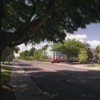 Urban forests provide benefits to society often referred to as ecosystem services: they improve human health, environmental quality, and local economies by increasing property values and aesthetics in communities. They help cities control storm water, reduce air pollution and energy costs, and offset carbon dioxide emissions. But urban forests also have “ecosystem disservices.” An accurate assessment of an urban forest’s costs can assist decision makers to better understand the role the forest plays in improving the well-being of the community. Identifying how funding is used can also help communities minimize costs and increase benefits. This 4-page fact sheet will review some of the types of costs associated with urban forests and present typical financial costs associated with urban forest management in the city of Gainesville, Florida. Written by Francisco Escobedo and Jennifer Seitz, and published by the UF Department of School of Forest Resources and Conservation, October 2012.
Urban forests provide benefits to society often referred to as ecosystem services: they improve human health, environmental quality, and local economies by increasing property values and aesthetics in communities. They help cities control storm water, reduce air pollution and energy costs, and offset carbon dioxide emissions. But urban forests also have “ecosystem disservices.” An accurate assessment of an urban forest’s costs can assist decision makers to better understand the role the forest plays in improving the well-being of the community. Identifying how funding is used can also help communities minimize costs and increase benefits. This 4-page fact sheet will review some of the types of costs associated with urban forests and present typical financial costs associated with urban forest management in the city of Gainesville, Florida. Written by Francisco Escobedo and Jennifer Seitz, and published by the UF Department of School of Forest Resources and Conservation, October 2012.
http://edis.ifas.ufl.edu/fr279